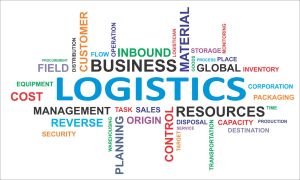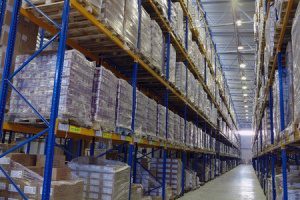Cross border ship

Tag Archives: third party logistics
How Global Logistics Management Can Help Increase Your Bottom Line
The purpose of global logistics management is to ensure that your company”s goods transfer from their point of origin to their destination in the most cost-effective way. Efficient and effective transportation is what you can expect, but how does it affect your company”s bottom line?


Continue reading
Outsource Your Warehousing and Distribution to a Reputable Logistics Company


business: If someone else can do it more efficiently, it’s probably worth letting them do it. By leveraging the strengths of a 3PL in optimizing your warehousing and distribution, you can refine your business to new heights—and new profits. Here are just a few reasons to consider third-party warehousing and distribution:
Shared Costs
Sharing a resource means sharing the expenses—without losing anything in the exchange. With third-party logistics, the equipment, resources, and man-hours that would go wasted if you handled the matter in-house end up tasked to others; that increased efficiency would put money in your pocket even if a 3PL had nothing else to offer over in-house warehousing and distribution.
Continue reading
5 Reasons You Should Consider Warehouse Services from 3PL Links


If goods get damaged or a theft occurs, it is not just a monetary loss to your company, it is also is loss of credibility in front of your customers due to delayed deliveries. These are issues that can cost your company dearly, both in terms of money and reputation. You should choose your warehousing partner with care. Without the right warehouse services, your business can suffer in many different ways.
Below are 5 reasons why you should choose professional warehouse services offered by 3PL Links.
- Expertise and Experience
3PL Links employs highly trained professionals who ensure all your logistics supply chain requirements are handled seamlessly. The company brings a wealth of knowledge and expertise and hence, is equipped to provide warehousing solutions to suit your needs and budget. This storage method minimizes risks and also ensures expedient and fast service. You never have to contend with inexperienced and untrained employees which increases the risk of loss and damage. Continue reading
When you should Consider Consulting with a Third Party Logistics Provider


Unfortunately, managing logistics is a major challenge for many businesses. Without streamlining logistics operations, a company can easily run into cost overruns, which will negatively impact its overall activity. How can you reduce the risk of cost overruns and outright failure? By simply consulting with a third party logistics provider, or 3PL. Continue reading
3PL Supply Chain Management Metrics to Look at


Carrying Cost of Inventory
The carrying cost of inventory is one of the supply chain management metrics that measures the costs of keeping inventory, whether over the short- or long-term. Carrying cost of inventory can help you to determine expected profits on current inventory, and if more product, or less, is required to ensure income levels or to cover expenses. It can also impact more strategic decision-making like sourcing. Continue reading
Should you Consider Supply Chain Segmentation?


Supply chain segmentation means grouping services or faculties together to meet an explicit set of requirements. Segmentation allows businesses to meet their customer needs at the lowest cost. It provides an organizational framework that consistently delivers value and business control the complete life progression of a product. Supply chain segmentation generally follows these steps:
Step One – Group Products and Delivery Channels
The first step for segmentation involves grouping products and delivery methods and creating a matrix, where all combinations are represented. Each combination is considered an individual supply chain. The distinct supply chains are rated using business revenue factors of gross profitability and sales. Continue reading
LTL Industry Best Practices for Cross-Border Shipping


Include the Proper Documents
The first step in making sure that you can properly engage in cross-border shipping is getting your documents in order. Important things that you need to have include:
- Your bill of lading that is filled out with all the necessary information
- Evidence of the purchase of the goods, such as an invoice or purchase order
- A license to import/export: this is usually only required for products that are regulated, like firearms, tobacco, etc.
Checklist for Efficient Global Supply Chain Management


Global Supply Chain Management Checklist
[ ] Always Start With Risk Management: Operational Risk Management is more than just a buzzword. It has to be the starting point of every logistics operation. While it may not be possible to disaster-proof every movement, you cannot know what contingencies you will need to prepare for if you do not take the time to consider the events that will have the most disruptive effects upon your operations. You need to consider how you will do business if your critical systems are rendered inoperable, what steps to take to respond to these catastrophes, and how to resume operations as quickly as possible. Continue reading
5 Common Mistakes in Supply Chain Management


That said, here are 5 common mistakes in modern-day supply chain management;
1. Prioritizing functions by spend
Quantifying by spend is probably the most common mistake in supply chain management. Simply put, you look at your suppliers and prioritize functions based on who supplies most of your goods and services. So, even if you have 20 suppliers, you’ll want to prioritize say five suppliers whom you’ve always spent 80 percent of your budget on. This strategy worked well until fifteen years ago when outsourcing was proliferated. Today, supply chains come in layers where you source from several suppliers.
You can no longer rely on a single source for your parts otherwise these parts would become a single point of failure in the supply chain. Continue reading


